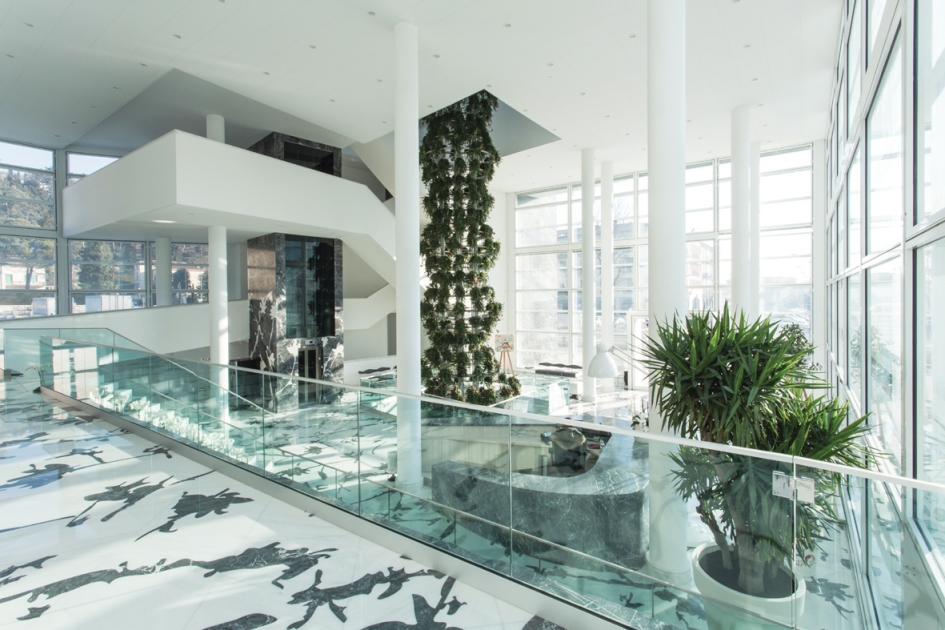
A Soft Stone Born from the Sea Concept by Giulio Delvè
To inaugurate the series of MARBLE STORIES, I believe that one should start from the very beginning, from 50 million years ago, from the Eocene-Oligocene geological epochs during which the protagonist of this year’s edition was born: Vicenza stone, also called ‘soft stone’.
It formed from the collapse of blocks of limestone, from the collapse of the coral reef in the warm, calm, shallow waters of a tropical lagoon that covered the present-day geographical area and was located at latitudes near the equator.
The sea is its mother: the waves and the slow build-up and sedimentation of sand, skeletons of micro-organisms, seashells, algae, shells, bivalve molluscs, crustaceans, and in particular tiny algae called nullipora.
Vicenza stone is one of the main materials composing the Berici Hills.
These hills are also home to one of the most important palaeontological sites and fossil deposits in the world in terms of size, number of fauna species and the perfect state of conservation as a result of the unique fossilization process that developed in this specific area. Its perfection is proven by the discovery of some species of jellyfish whose body, composed mainly of water, was extremely difficult to preserve.
Countless laminated limestones containing the remains of annelids, insects, foraminifers and plants, as well as more than 150 species of coastal fish whose bones and a part of their cartilage and organic tissues are still preserved have been quarried. They bear witness to a marine and coastal habitat that once existed here and that shows incredible similarities to organisms living today in the Indian and Pacific Oceans.
Vicenza stone is an excellent material to shape because it is easy to chip and work. It has an incredible historical and symbolic value. In terms of its mineralogical composition, it is an organogenic limestone made of clastic material and fossils.
The fossil evokes the essence of resemblance and representation, the lasting memory of a trace and of its present. The word “fossil” comes from the Latin word “fodere” which means “to dig”.
The analogy with the act of sculpting (by removing) is blatant and is the fruit of a paradox, namely the collision of a here and a not here. It is the tale of contact and of loss. And this very absence implies that something exists because it manifests its actual presence, thus giving rise to a
binomial consisting of the concepts of appearance and disappearance: things that once existed and that are now invisible become physical, tangible, visible, and hence sculptural. Matter and form are not just the fruit of accumulation, but also of removal. Digging to recover, explore, and bring back to light, digging to create and re-create...


























